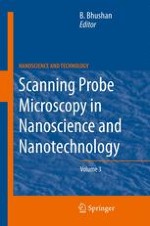
2013 | OriginalPaper | Buchkapitel
1. Laser-Assisted Scanning Probe Alloying Nanolithography (LASPAN)
verfasst von : Luohan Peng, Huiliang Zhang, Philip Hemmer, Hong Liang
Erschienen in: Scanning Probe Microscopy in Nanoscience and Nanotechnology 3
Verlag: Springer Berlin Heidelberg
Aktivieren Sie unsere intelligente Suche, um passende Fachinhalte oder Patente zu finden.
Wählen Sie Textabschnitte aus um mit Künstlicher Intelligenz passenden Patente zu finden. powered by
Markieren Sie Textabschnitte, um KI-gestützt weitere passende Inhalte zu finden. powered by